Matsuo Basho——Great Poetry
Poetry by Basho
A bee
A bee
staggers out
of the peony.
A bee
staggers out
of the peony.
Matsuo Basho
A caterpillar
A caterpillar,
this deep in fall
still not a butterfly.
A caterpillar,
this deep in fall
still not a butterfly.
Matsuo Basho
A cicada shell
A cicada shell;
it sang itself
utterly away.
A cicada shell;
it sang itself
utterly away.
Matsuo Basho
A cool fall night
At a hermitage:
A cool fall night
getting dinner, we peeled
eggplants, cucumbers.
At a hermitage:
A cool fall night
getting dinner, we peeled
eggplants, cucumbers.
Matsuo Basho
A field of cotton
A field of cotton
as if the moon
had flowered.
A field of cotton
as if the moon
had flowered.
Matsuo Basho
A monk sips morning tea
A monk sips morning tea,
it’s quiet,
the chrysanthemum’s flowering.
A monk sips morning tea,
it’s quiet,
the chrysanthemum’s flowering.
Matsuo Basho
A snowy morning
A snowy morning
by myself,
chewing on dried salmon.
A snowy morning
by myself,
chewing on dried salmon.
Matsuo Basho
Autumn moonlight
Autumn moonlight
a worm digs silently
into the chestnut.
Autumn moonlight
a worm digs silently
into the chestnut.
Matsuo Basho
Awake at night
Awake at night
the sound of the water jar
cracking in the cold.
Awake at night
the sound of the water jar
cracking in the cold.
Matsuo Basho
Bitter–tasting ice
Bitter–tasting ice
Just enough to wet the throat
Of a sewer rat.
Matsuo Basho
Bitter–tasting ice
Just enough to wet the throat
Of a sewer rat.
Matsuo Basho
Blowing stones
Blowing stones
along the road on Mount Asama,
the autumn wind.
Blowing stones
along the road on Mount Asama,
the autumn wind.
Matsuo Basho
Bush warbler
Bush warbler:
shits on the rice cakes
on the porch rail.
Bush warbler:
shits on the rice cakes
on the porch rail.
Matsuo Basho
Cold night: the wild duck
Cold night: the wild duck,
sick, falls from the sky
and sleeps awhile.
Cold night: the wild duck,
sick, falls from the sky
and sleeps awhile.
Matsuo Basho
Coolness of the melons
Coolness of the melons
flecked with mud
in the morning dew.
Coolness of the melons
flecked with mud
in the morning dew.
Matsuo Basho
Don’t imitate me
Don’t imitate me;
it’s as boring
as the two halves of a melon.
Don’t imitate me;
it’s as boring
as the two halves of a melon.
Matsuo Basho
First day of spring
First day of spring
I keep thinking about
the end of autumn.
First day of spring
I keep thinking about
the end of autumn.
Matsuo Basho
First snow
First snow
falling
on the half-finished bridge.
First snow
falling
on the half-finished bridge.
Matsuo Basho
First winter rain
First winter rain
even the monkey
seems to want a raincoat.
First winter rain
even the monkey
seems to want a raincoat.
Matsuo Basho
Fleas, lice
Fleas, lice,
a horse peeing
near my pillow.
Fleas, lice,
a horse peeing
near my pillow.
Matsuo Basho
Heat waves shimmering
Heat waves shimmering
one or two inches
above the dead grass.
Heat waves shimmering
one or two inches
above the dead grass.
Matsuo Basho
How admirable
How admirable!
to see lightning and not think
life is fleeting.
How admirable!
to see lightning and not think
life is fleeting.
Matsuo Basho
In this world of ours
In this world of ours,
We eat only to cast out
Sleep only to wake
And what comes after all that
Is simply to die at last.
In this world of ours,
We eat only to cast out
Sleep only to wake
And what comes after all that
Is simply to die at last.
Matsuo Basho
Midfield
Midfield,
attached to nothing,
the skylark singing.
Midfield,
attached to nothing,
the skylark singing.
Matsuo Basho
Moonlight slanting
Moonlight slanting
through the bamboo grove;
a cuckoo crying.
Moonlight slanting
through the bamboo grove;
a cuckoo crying.
Matsuo Basho
Spring rain
Spring rain
leaking through the roof
dripping from the wasps’ nest.
Spring rain
leaking through the roof
dripping from the wasps’ nest.
Matsuo Basho
Staying at an inn
Staying at an inn
where prostitutes are also sleeping
bush clover and the moon.
Staying at an inn
where prostitutes are also sleeping
bush clover and the moon.
Matsuo Basho
Stillness
Stillness
the cicada’s cry
drills into the rocks.
Stillness
the cicada’s cry
drills into the rocks.
Matsuo Basho
Taking a nap
Taking a nap
feet planted
against a cool wall.
Taking a nap
feet planted
against a cool wall.
Matsuo Basho
Teeth sensitive to the sand
Teeth sensitive to the sand
in salad greens
I’m getting old.
Teeth sensitive to the sand
in salad greens
I’m getting old.
Matsuo Basho
The dragonfly
The dragonfly
can’t quite land
on that blade of grass.
The dragonfly
can’t quite land
on that blade of grass.
Matsuo Basho
The morning glory also
The morning glory also
turns out
not to be my friend.
The morning glory also
turns out
not to be my friend.
Matsuo Basho
The oak tree
The oak tree:
not interested
in cherry blossoms.
The oak tree:
not interested
in cherry blossoms.
Matsuo Basho
The old pond
An old pond
a frog leaps in
the sound of water
An old pond
a frog leaps in
the sound of water
Matsuo Basho
The squid seller’s call
The squid seller’s call
mingles with the voice
of the cuckoo.
The squid seller’s call
mingles with the voice
of the cuckoo.
Matsuo Basho
This old village
This old village
not a single house
without persimmon trees.
This old village
not a single house
without persimmon trees.
Matsuo Basho
What fish feel
What fish feel
birds feel, I don’t know
the year ending.
What fish feel
birds feel, I don’t know
the year ending.
Matsuo Basho
When the winter chrysanthemums go
When the winter chrysanthemums go
there’s nothing to write about
but radishes.
When the winter chrysanthemums go
there’s nothing to write about
but radishes.
Matsuo Basho
Winter garden
Winter garden
the moon thinned to a thread,
insects singing.
Winter garden
the moon thinned to a thread,
insects singing.
Matsuo Basho
Winter solitude
Winter solitude
in a world of one color
the sound of wind.
Winter solitude
in a world of one color
the sound of wind.
Matsuo Basho
Wrapping the rice cakes
Wrapping the rice cakes
with one hand
she fingers back her hair.
Wrapping the rice cakes
with one hand
she fingers back her hair.
Matsuo Basho
同时,这位日本诗人也是英国摄影家肯纳(Michael Kenna,1953— )最为欣赏的诗人之一。
肯纳可以看成为上个世纪50到60年代稳定不变的北欧摄影的一个异数。在他出生和长大的地方,光线总是处于一种灰色的影调,从柔和的灰色到暴风雨的浓密灰色,从而让他所看到的风景总是处于戏剧化的空间。这就是地中海地区典型的光线,已经塑造了人们的视觉感受,从而为探索摄影的可能奠定了独特的基础。当然更重要的是,肯纳可以通过惊人的还原力,将这样一种华丽的氛围通过他的照片展现给我们。更有意思的是,不管是在阿布扎比、加州还是埃及,他所创造的画面始终保留一种恒定不变的光线氛围和情感特征,似乎摄影家将这些元素装进了自己的摄影包,带到了那里,释放出他想要的那个世界。 面对这样一种独特的审美追求,摄影家的控制相对画家来说要难很多。相对那些后纪实摄影或者新画意摄影的摄影家来说,他更胜一筹的是,不是凭借偶然的机遇挑战现实,而是以坚韧的目光始终不渝地展现世界的稳定性。同时,如果从他的风景摄影的构图角度出发考虑,也是一件很特别有意思的事情。他所感兴趣的,并非是新奇独特的、前所未有的让人震惊的视点。不管是旧金山大桥,基奥普斯金字塔,还是复活岛上的雕塑,我们也都可以从以往的摄影家的镜头中看到相同的选择,包括空间和主题。但是肯纳的作品更有其不可抹去的哲学特征,或者说是心理学上的氛围。这样一种独特的心理氛围可以让我们明白无误地联想到19世纪后期欧洲风景画家和雕刻家——没有强烈的直射的阳光,沐浴在令人昏睡的、置人于死地的光线中。这样的一种完美的控制能力和结构空间,足以让肯纳进入大师的行列。 桑德罗·帕米杰亚尼是这样评述的:《创世纪》中是这样说的:上帝在第七天完成了对世界的创造,于是他休息了:上帝也需要一个安息日。然而观看肯纳的这些作品,为什么也会联想到“安息日”这个词汇?或许这词汇中会有某种神秘的意味?因为我第一次看到他的作品,就十分喜欢,就像是面对一个缓慢深呼吸的世界,让流逝的时间慢慢扩展开来,似乎整个地球都被笼罩在静默之间。其实我们都生活在匆忙之中,不知不觉忽略了身边值得欣赏的景观,丧失了对生命最本质的领悟。然而肯纳给我们带来了他的作品,画面中没有人,不会因为某张脸或某个身躯分散我们的注意力,仅仅是纯净的线条,耸立的丛林或树木,构成了多样化的对比:从坚硬到柔和,从光线到阴影,逐渐散开的雾隐藏了什么,又揭示了什么。或者是柔和的白雪,构成了戏剧化的空间,包括岩石的构成,岛屿,海岸,凝固的水浪。换句话说,肯纳对人类生存状态的直接纪实或者描述并不感兴趣,但是沿着画面中深深浅浅的痕迹,我们发现他隐藏在后面,延伸穿越整个世界的轨迹。
肯纳的兴趣在于引领我们从某种意义上说的探索,穿越田野,走过长长的人迹罕到的道路,漫游在白雪或迷雾中,到达一个对他而言的神秘之地,在一个不同寻常的视角向我们展开。肯纳的影像其实就是让我们展开想象的翅膀,感受一个未被人类开发的、纯净而原始的自然。这是一片终年沐浴着古典光芒的土地,属于过去的时代,也可能从过去指向未来。回顾摄影史,我们也许可以简单地将肯纳的作品归入画意主义的传统。这一传统起源于19世纪中期,式微于20世纪初,其目的主要是将摄影从传统的机械记录的偏见中解脱出来,释放在艺术的领域。然而当时的画意摄影,主要技巧就是使用特殊的镜头,或者多底合成,从不同的角度模仿绘画的样式。而就肯纳而言,他力求通过对瞬间几乎间歇性的张力把握,强调一种特殊的氛围,从一个他所创造的特殊角度力图摆脱平庸。换句话说,他的摄影语言具有非常纯粹的艺术特征,具有确切的情感冲击力,甚至多愁善感的魔力。当然这一切也源于他年轻时代对绘画的热爱,并且最终将绘画的热情转向了他以为更容易把握的摄影。所以从严格的意义上说,他并没有放弃绘画,只是选择了不同的工具,也就是照相机,代替了传统的画笔。 肯纳的影像具有两部分重要的特征,那就是幻象的构成和意外的揭示。也就是说,一切对于我们来说都好像是未知的,但是一旦看到这些被肯纳提炼出来的影像之后,却又发现好像是非常熟悉的。然后画面独特的构成又像是从宗教的角度揭示了世界核心的秘密,经过精粹的提炼,成为世界已经失落的挽歌,似乎只有从影像中才可能赎回——这实际上就成了一次“情感教育”,有能力渗透到每个人灵魂中。如果说肯纳的作品是基于氛围的营造和灵性的启迪,旨在激发我们视觉和心灵深处的东西,那么我们就必须站在一个独特的位置观看,摆脱一切既有的陈词滥调或陈规旧俗——不仅是摄影的,包括绘画的影响。我们可能会联想到19世纪英国著名的摄影家比特·爱默生(Peter H. Emerson)所说的:“一个人越是崇拜自然之美,也就越是会相信自然的和谐远非画家所能表达的。”或者换一个角度说,超越风景的景观,源于最原始情感的构成。 于是我们可以说,肯纳影像就是一种“超越风景的景观”,也就意味着他的每一幅作品都是一个综合体,是浓缩和提炼,是首先让他感动之后所唤起的某种风景的记忆——也许只有他之前的两位摄影家可以进入这样的行列:阿杰(Atget)和休德克(Sudek),当然也包括一些重要的画家。接下来当肯纳将这些构成画面时,就必须寻找一些秩序。一般来说,风景画家不管如何开放创新,他们或多或少总是保留一些传统的成分,而像肯纳这样的摄影家,却逼着自己从真实中萃取什么,其中包括一些不可忽略的东西。比如,他会选择一天中的某个时段,比如晚上,有特殊氛围的状态,和光线以及阴影密切相关,然后从纯粹的角度提升、简化,保留足够的细节又排除尽可能不需要的东西,在合适的光芒下笼罩独特的朦胧感,直到一切归于宁静,成为独特的风景。于是当我们面对这样一种类似宗教般的风景时,让我们有了向长久以来渴望的某个地方旅行的愿望。简而言之,肯纳的风景就是一次情感的旅途,不仅仅是描绘一个世界的特征,同时也是面对人类的生存状态,即便是面对一种孤独的甚至魔法般的情感压迫,我们也会摆脱幽闭的禁忌,迈向灵魂的深度。 肯纳的照片做得很小,和当代摄影的庞然大物形成鲜明的对照。照片拿在手上很合适,就像是和一张很久以前的老照片亲密接触。照片中似乎有着宇宙般的呼吸感,让这个世界活了起来,仿佛会有魔法般的戏剧化空间呈现。方寸之间所展示的却是异常开放的空间,比如面对大海,一切自然的奇迹仿佛都会扑面而来,显得深不可测。或者他会让你审视大地,面对山川湖泊的细节,渺无人烟的灌木丛林,甚至就是一些木桩或者沙丘的痕迹,然后让人联想到末日的光芒,或者在戏剧化的张力中呈现的人生的莫测。寂寞和静谧是肯纳之最爱,尤其是独特的氛围所强化的神秘莫测和不确定性。他很少使用强烈的光芒,而是将光线融入一切,融入所有的细节,释放出自由的力量。 肯纳尤其喜欢在东方旅行,日本的湖泊,甚至中国的黄山。他尤其喜欢日本诗人芭蕉(MATSUO BASHO,1644-1694),吟诵他著名的俳句:“裸露的枝条上/一只乌鸦栖息。/秋之黄昏。”此时的摄影家如同隐匿在神秘的光环中,游离于有限和无限的空间——在隐藏和揭示的对立中逼近无限。我们也许只需倾听自然,在和谐中汲取最神秘的精华,甚至呼吸到来自远古的神秘气息,渗透在宇宙之间。然而这一切并非具有表面化的强烈冲击力和震撼力,只是如同“随风潜入夜,润物细无声”的自然,和我们日常生活的节奏同步。 A beautifully designed monograph surveying the works of the highly acclaimed contemporary photographer. Kenna’s photographs captivate viewers through their silent drama and magnetism: rather than being accurate descriptions of a place, the photographer seems interested in capturing the invisible lines which enclose space, and in so doing arousing a viewer’s imagination and reverie. This catalog showcases 290 black-and-white photographs: 200 trace the artist’s career, from early 1970s images shot in England, to the photographs of the following three decades, which result from travels and commissions in every continent throughout the world; 35 record Venice’s everlasting appeal; 20 reflect one of Kenna’s most important jobs, that of recording the Nazi concentration and extermination camps.
Michael Kenna was born in England in 1953 but has been living in the United States for thirty years. Of the many showings of his works that have been held in public venues and private galleries, mention should be made particularly of those in museums in France, Japan and the United States, the latest being in the French National Library, Paris, in 2009. Sandro Parmiggiani is an art historian and art critic. He is also the curator of hundreds of exhibitions in Italy and abroad.
相关图片欣赏:
肯纳可以看成为上个世纪50到60年代稳定不变的北欧摄影的一个异数。在他出生和长大的地方,光线总是处于一种灰色的影调,从柔和的灰色到暴风雨的浓密灰色,从而让他所看到的风景总是处于戏剧化的空间。这就是地中海地区典型的光线,已经塑造了人们的视觉感受,从而为探索摄影的可能奠定了独特的基础。当然更重要的是,肯纳可以通过惊人的还原力,将这样一种华丽的氛围通过他的照片展现给我们。更有意思的是,不管是在阿布扎比、加州还是埃及,他所创造的画面始终保留一种恒定不变的光线氛围和情感特征,似乎摄影家将这些元素装进了自己的摄影包,带到了那里,释放出他想要的那个世界。 面对这样一种独特的审美追求,摄影家的控制相对画家来说要难很多。相对那些后纪实摄影或者新画意摄影的摄影家来说,他更胜一筹的是,不是凭借偶然的机遇挑战现实,而是以坚韧的目光始终不渝地展现世界的稳定性。同时,如果从他的风景摄影的构图角度出发考虑,也是一件很特别有意思的事情。他所感兴趣的,并非是新奇独特的、前所未有的让人震惊的视点。不管是旧金山大桥,基奥普斯金字塔,还是复活岛上的雕塑,我们也都可以从以往的摄影家的镜头中看到相同的选择,包括空间和主题。但是肯纳的作品更有其不可抹去的哲学特征,或者说是心理学上的氛围。这样一种独特的心理氛围可以让我们明白无误地联想到19世纪后期欧洲风景画家和雕刻家——没有强烈的直射的阳光,沐浴在令人昏睡的、置人于死地的光线中。这样的一种完美的控制能力和结构空间,足以让肯纳进入大师的行列。 桑德罗·帕米杰亚尼是这样评述的:《创世纪》中是这样说的:上帝在第七天完成了对世界的创造,于是他休息了:上帝也需要一个安息日。然而观看肯纳的这些作品,为什么也会联想到“安息日”这个词汇?或许这词汇中会有某种神秘的意味?因为我第一次看到他的作品,就十分喜欢,就像是面对一个缓慢深呼吸的世界,让流逝的时间慢慢扩展开来,似乎整个地球都被笼罩在静默之间。其实我们都生活在匆忙之中,不知不觉忽略了身边值得欣赏的景观,丧失了对生命最本质的领悟。然而肯纳给我们带来了他的作品,画面中没有人,不会因为某张脸或某个身躯分散我们的注意力,仅仅是纯净的线条,耸立的丛林或树木,构成了多样化的对比:从坚硬到柔和,从光线到阴影,逐渐散开的雾隐藏了什么,又揭示了什么。或者是柔和的白雪,构成了戏剧化的空间,包括岩石的构成,岛屿,海岸,凝固的水浪。换句话说,肯纳对人类生存状态的直接纪实或者描述并不感兴趣,但是沿着画面中深深浅浅的痕迹,我们发现他隐藏在后面,延伸穿越整个世界的轨迹。
肯纳的兴趣在于引领我们从某种意义上说的探索,穿越田野,走过长长的人迹罕到的道路,漫游在白雪或迷雾中,到达一个对他而言的神秘之地,在一个不同寻常的视角向我们展开。肯纳的影像其实就是让我们展开想象的翅膀,感受一个未被人类开发的、纯净而原始的自然。这是一片终年沐浴着古典光芒的土地,属于过去的时代,也可能从过去指向未来。回顾摄影史,我们也许可以简单地将肯纳的作品归入画意主义的传统。这一传统起源于19世纪中期,式微于20世纪初,其目的主要是将摄影从传统的机械记录的偏见中解脱出来,释放在艺术的领域。然而当时的画意摄影,主要技巧就是使用特殊的镜头,或者多底合成,从不同的角度模仿绘画的样式。而就肯纳而言,他力求通过对瞬间几乎间歇性的张力把握,强调一种特殊的氛围,从一个他所创造的特殊角度力图摆脱平庸。换句话说,他的摄影语言具有非常纯粹的艺术特征,具有确切的情感冲击力,甚至多愁善感的魔力。当然这一切也源于他年轻时代对绘画的热爱,并且最终将绘画的热情转向了他以为更容易把握的摄影。所以从严格的意义上说,他并没有放弃绘画,只是选择了不同的工具,也就是照相机,代替了传统的画笔。 肯纳的影像具有两部分重要的特征,那就是幻象的构成和意外的揭示。也就是说,一切对于我们来说都好像是未知的,但是一旦看到这些被肯纳提炼出来的影像之后,却又发现好像是非常熟悉的。然后画面独特的构成又像是从宗教的角度揭示了世界核心的秘密,经过精粹的提炼,成为世界已经失落的挽歌,似乎只有从影像中才可能赎回——这实际上就成了一次“情感教育”,有能力渗透到每个人灵魂中。如果说肯纳的作品是基于氛围的营造和灵性的启迪,旨在激发我们视觉和心灵深处的东西,那么我们就必须站在一个独特的位置观看,摆脱一切既有的陈词滥调或陈规旧俗——不仅是摄影的,包括绘画的影响。我们可能会联想到19世纪英国著名的摄影家比特·爱默生(Peter H. Emerson)所说的:“一个人越是崇拜自然之美,也就越是会相信自然的和谐远非画家所能表达的。”或者换一个角度说,超越风景的景观,源于最原始情感的构成。 于是我们可以说,肯纳影像就是一种“超越风景的景观”,也就意味着他的每一幅作品都是一个综合体,是浓缩和提炼,是首先让他感动之后所唤起的某种风景的记忆——也许只有他之前的两位摄影家可以进入这样的行列:阿杰(Atget)和休德克(Sudek),当然也包括一些重要的画家。接下来当肯纳将这些构成画面时,就必须寻找一些秩序。一般来说,风景画家不管如何开放创新,他们或多或少总是保留一些传统的成分,而像肯纳这样的摄影家,却逼着自己从真实中萃取什么,其中包括一些不可忽略的东西。比如,他会选择一天中的某个时段,比如晚上,有特殊氛围的状态,和光线以及阴影密切相关,然后从纯粹的角度提升、简化,保留足够的细节又排除尽可能不需要的东西,在合适的光芒下笼罩独特的朦胧感,直到一切归于宁静,成为独特的风景。于是当我们面对这样一种类似宗教般的风景时,让我们有了向长久以来渴望的某个地方旅行的愿望。简而言之,肯纳的风景就是一次情感的旅途,不仅仅是描绘一个世界的特征,同时也是面对人类的生存状态,即便是面对一种孤独的甚至魔法般的情感压迫,我们也会摆脱幽闭的禁忌,迈向灵魂的深度。 肯纳的照片做得很小,和当代摄影的庞然大物形成鲜明的对照。照片拿在手上很合适,就像是和一张很久以前的老照片亲密接触。照片中似乎有着宇宙般的呼吸感,让这个世界活了起来,仿佛会有魔法般的戏剧化空间呈现。方寸之间所展示的却是异常开放的空间,比如面对大海,一切自然的奇迹仿佛都会扑面而来,显得深不可测。或者他会让你审视大地,面对山川湖泊的细节,渺无人烟的灌木丛林,甚至就是一些木桩或者沙丘的痕迹,然后让人联想到末日的光芒,或者在戏剧化的张力中呈现的人生的莫测。寂寞和静谧是肯纳之最爱,尤其是独特的氛围所强化的神秘莫测和不确定性。他很少使用强烈的光芒,而是将光线融入一切,融入所有的细节,释放出自由的力量。 肯纳尤其喜欢在东方旅行,日本的湖泊,甚至中国的黄山。他尤其喜欢日本诗人芭蕉(MATSUO BASHO,1644-1694),吟诵他著名的俳句:“裸露的枝条上/一只乌鸦栖息。/秋之黄昏。”此时的摄影家如同隐匿在神秘的光环中,游离于有限和无限的空间——在隐藏和揭示的对立中逼近无限。我们也许只需倾听自然,在和谐中汲取最神秘的精华,甚至呼吸到来自远古的神秘气息,渗透在宇宙之间。然而这一切并非具有表面化的强烈冲击力和震撼力,只是如同“随风潜入夜,润物细无声”的自然,和我们日常生活的节奏同步。 A beautifully designed monograph surveying the works of the highly acclaimed contemporary photographer. Kenna’s photographs captivate viewers through their silent drama and magnetism: rather than being accurate descriptions of a place, the photographer seems interested in capturing the invisible lines which enclose space, and in so doing arousing a viewer’s imagination and reverie. This catalog showcases 290 black-and-white photographs: 200 trace the artist’s career, from early 1970s images shot in England, to the photographs of the following three decades, which result from travels and commissions in every continent throughout the world; 35 record Venice’s everlasting appeal; 20 reflect one of Kenna’s most important jobs, that of recording the Nazi concentration and extermination camps.
Michael Kenna was born in England in 1953 but has been living in the United States for thirty years. Of the many showings of his works that have been held in public venues and private galleries, mention should be made particularly of those in museums in France, Japan and the United States, the latest being in the French National Library, Paris, in 2009. Sandro Parmiggiani is an art historian and art critic. He is also the curator of hundreds of exhibitions in Italy and abroad.
相关图片欣赏:
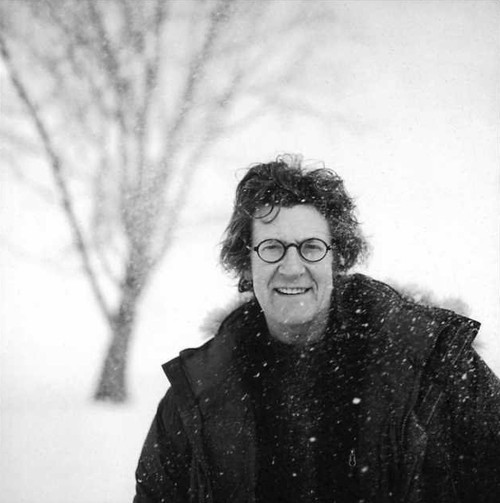
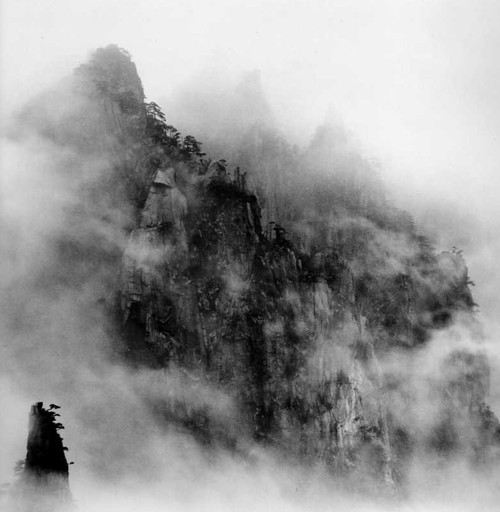


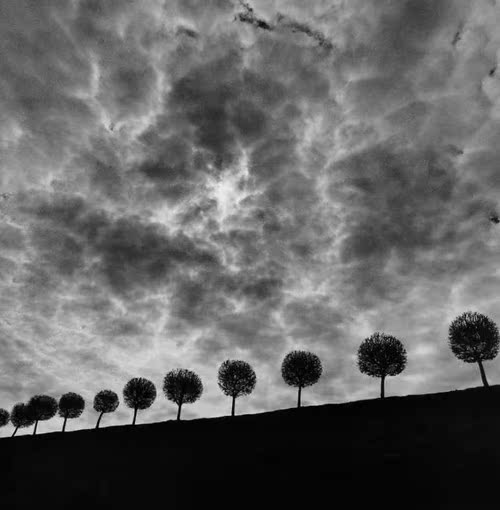
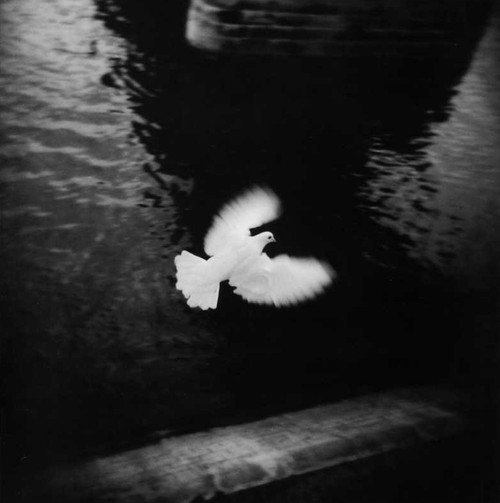
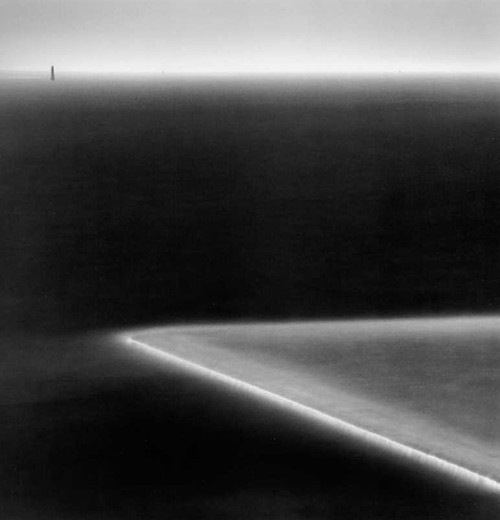



评论
发表评论